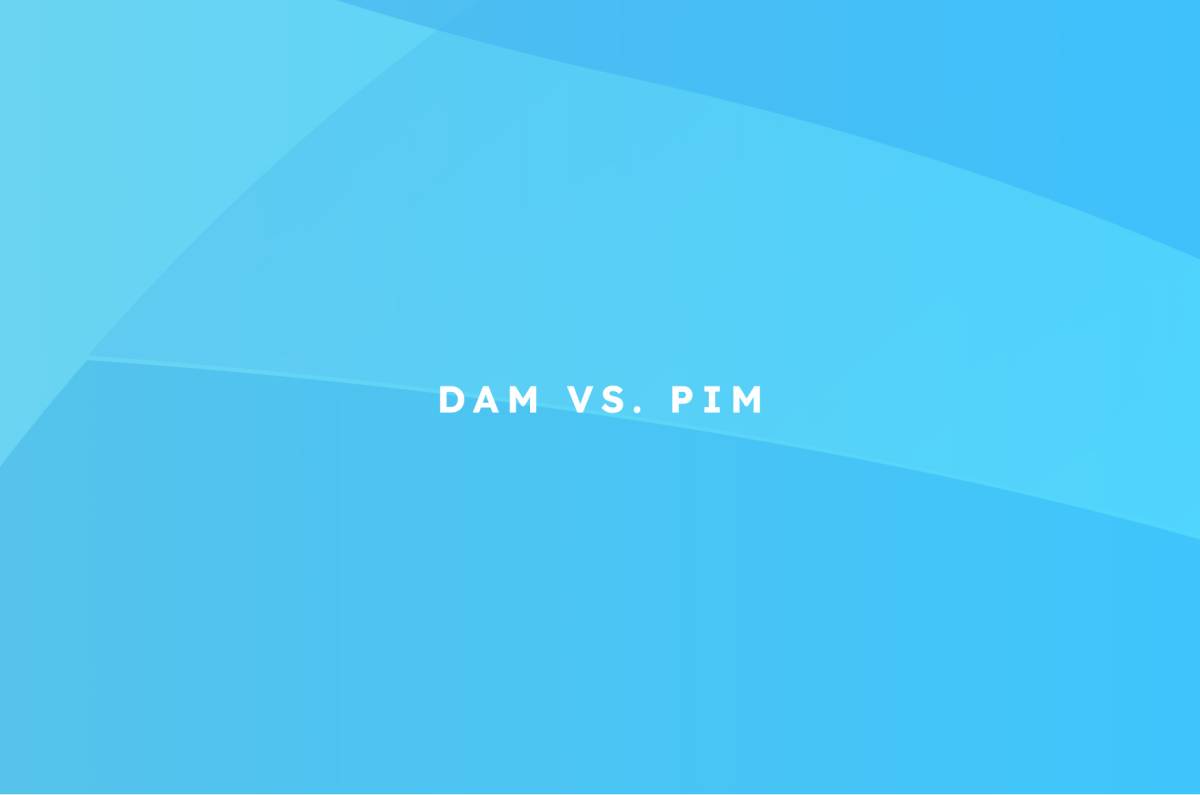Experience in a live demo how TESSA DAM efficiently manages your digital content.
Introduction
Consumers today shop online - not only, but a lot. As in the past and today in printed catalogs, product data and images are extremely important to convince potential buyers to make a purchase. Digital asset management (DAM) and product information management (PIM) both play a crucial role in enabling companies to efficiently manage their digital resources and product information so that they can efficiently populate online stores, catalogs and many other documents with images and data. But what are the differences between these two systems and when should you use which one? Or perhaps you need both systems? In this article, we go into these questions in detail.
What is Digital Asset Management (DAM)?
DAM refers to the process of managing, organizing and providing digital resources within an organization or company. These digital assets can include a variety of file formats, such as images, videos, audio files, documents and other media. The main goal of DAM is to facilitate access to these digital assets, ensure their reusability and security, and efficiently manage the entire lifecycle of the digital content. By implementing a digital asset management system, your company can save time and resources by creating a central platform to organize, search, edit and share the digital content.
Main features of DAM systems:
- Asset integration: DAM systems provide procedures for the structured integration of assets into a database
- Central storage: All digital assets - product and brand-related - are stored in a central location.
- Easy search and findability: Assets can be found quickly using metadata and tags.
- Versioning and history: Track and manage different versions of an asset.
- Access control: Management of user rights and access levels.
- Asset distribution: Assets can be made available in various ways (e.g. CDN, FTP, ZIP download, etc.) in various forms (e.g. size, file format).
We have explained DAM systems in detail here.
What is Product Information Management (PIM)?
PIM is a system for the central management and maintenance of all product-related information. This includes technical data, descriptions, images, videos and other product details. A PIM system makes it possible to keep product information consistent and up-to-date and to distribute it from product development across various sales channels - B2B and B2C.
Main features of PIM systems:
- Central database for product master data: Storage of all product information in one place, from product development information to marketing information
- Data enrichment: Supplementing and refining product information. This includes, for example, the creation of texts and translations.
- Multi-channel distribution: Distribution of consistent product data via various channels such as e-commerce, print catalogs and marketplaces.
- Integration: Integration into other systems such as DAM, ERP, CRM, CMS and store systems.
We have explained PIM systems in detail here.
Differences between DAM and PIM
Although both DAM and PIM are used to manage information, they differ fundamentally in their focus and functionality. The following is a comparison of PIM and DAM:
|
Criterion |
DAM |
PIM |
|
Focus |
Digital media managementn |
Management of product information |
|
Target group |
Marketing, creative teams/p> |
Product management, sales, marketing |
|
Main function |
Saving, organizing and sharing media |
Centralization and distribution of product data |
|
Data type |
Images, videos, documents, graphics, etc. |
Technical data, descriptions, prices, pictures |
|
Area of application |
Product catalogs, e-commerce, marketplaces, marketing campaigns, branding, advertising |
Product catalogs, e-commerce, marketplaces |
Similarities between PIM and DAM
Both systems deal with product data. In the PIM, this is available as attributes in various forms (e.g. texts, numbers, options, etc.) in a DAM there are files, the assets. For you, these systems are
- The systems work at product level
- The single point of truth for product data
- Assortments can be derived
If they are connected, attribute and asset data can be extracted synchronously.
Advantages of DAM in various situations
A DAM system offers considerable advantages, particularly in certain scenarios. Here are some examples:
Advantages of DAM:
- Efficient management of media: all digital assets are stored centrally and are easy to find. There is therefore no longer any uncertainty as to whether it is the current version of an asset.
- Consistent branding: By storing assets centrally, it is possible to check and ensure that all media used complies with brand guidelines.
- Collaboration: Teams can work on projects simultaneously and use the latest versions. If publishing solutions such as InBetween are used, it is possible to update images until shortly before printing.
- Time saving: Faster searches and reuse of assets reduce the workload.
When is DAM ideal?
The areas of application of DAM systems go beyond those of PIM systems. PIMs actually only manage product data. There are PIM systems that also record product assets. As soon as marketing campaigns, branding and advertising play an important role in your company, a DAM is recommended alongside a PIM. The importance of using a DAM increases as soon as you work with large amounts of digital media that need to be organized and reused. This becomes even more important if the images, documents, videos and other files come to you from many sources - for example, you have many suppliers, you work with many photographers or the processing of the files is spread across many different locations. If these teams also need to access media at the same time in order to edit them, then a specialized solution such as a DAM is extremely helpful. The functionality of a DAM goes far beyond the asset management capabilities of a PIM. For companies that want to present their brand identity consistently across all channels and also have many products and/or many assets per product, a DAM - which of course also works together with a PIM - is highly recommended.
How can you tell if you should look into buying a DAM?
If you answer "yes" to more than one of the following questions, you should consider purchasing a DAM:
- Is branding important to you?
- Do you have a lot of complex products?
- Are your images and digital assets such as product data sheets, videos and images stored on a hard disk or network drive?
- Do you use a cloud storage service such as Dropbox, Google Drive or OneDrive?
- Can you no longer find images or files because you don't know where they are stored in your folder structure?
- Do you save images and assets multiple times in different resolutions for different purposes?
- Do you frequently send large files by email to suppliers, team members or customers?
Advantages of PIM in various situations
A PIM system is particularly advantageous when it comes to efficiently managing and distributing product information. Here are some examples:
Advantages of PIM:
- Centralized data management: all product information is stored in one place and is easy to update.
- Consistency and accuracy: Ensuring that product information is consistent and accurate across all sales channels.
- Faster time to market: Accelerate the launch of new products through efficient data management.
- Improved customer loyalty: Providing complete and accurate product information increases customer confidence.
When is PIM ideal?
As soon as you are dealing with the management of a large number of products with extensive information, a PIM is extremely helpful. If this data also comes from different sources - for example different suppliers, EPR systems, data from product development - then it is helpful if the data is automatically converted to a standardized format by the PIM process. If this product information also has to be updated regularly, then working with Excel or the databases of store systems is error-prone, dangerous and inefficient. If the data also needs to be distributed across multiple channels, it is virtually impossible to work reliably without a specialized system. A PIM system is recommended anyway for companies with many products that need to provide their product data in different languages and formats.
How can you tell if you should consider purchasing a PIM?
If you answer "yes" to more than one of the following questions, you should consider purchasing a PIM:
- Do you have a lot of products?
- Do customers frequently contact you because of missing, inconsistent or incorrect product data?
- Do you need consistent and up-to-date product data in all departments involved?
- Is your product portfolio complex and is the product information updated frequently?
- Is a wide variety of data generated from different sources?
- Do you provide your customers with a lot of product information, for example for the online store or marketplaces?
How can PIM and DAM be integrated?
In some situations, a PIM is sufficient, sometimes even a DAM. The tools develop their true effectiveness together and in coordination with each other. The TESSA DAM, for example, communicates with the Akeneo PIM via API. This allows all assets to be automatically linked to the products. The key to this is usually the article number of the product, which is available in the asset data. This allows you to keep track of large amounts of data and automatically populate websites, online stores, catalogs or product data sheets with product data and assets.
We have explained in detail the joint integration of PIM and DAM and why the combination of PIM & DAM is the optimal solution for you here.
Conclusion
DAM und PIM - unverzichtbare Werkzeuge
Both DAM and PIM are indispensable tools for modern companies that want to manage their digital resources and product information efficiently. The systems are complementary. For companies with a few simple products that do not produce catalogs or product data sheets, a PIM with asset management functionality may be sufficient, but as soon as the products become more complex (and therefore more assets are required) or more products are produced (and again more assets are required), a stand-alone DAM is helpful. If branding or branding plays a relevant role in the products manufactured and/or operated, a DAM is advisable anyway. Sometimes even a DAM system with a brand portal such as TESSA BrandHub is sufficient.
Both systems have their own advantages and make a very good team when combined. We will be happy to advise you and find the optimal data and asset management solution for you. Feel free to contact us at hello@tessa-dam.com. We look forward to getting to know you!







